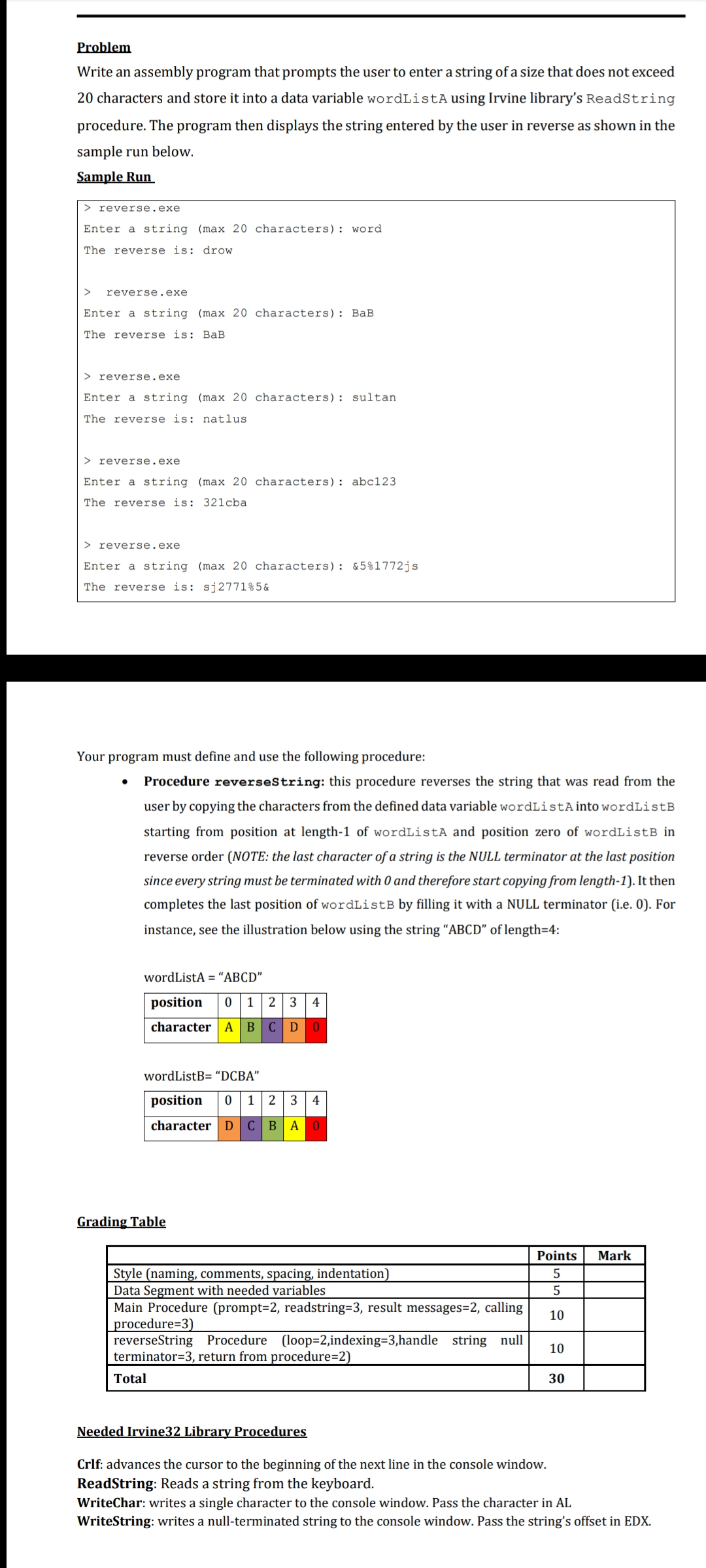Problem Write an assembly program that prompts the user to enter a string of a size that does not exceed 20 characters and store it into a data variable wordListA using Irvine library's ReadString procedure. The program then displays the string entered by the user in reverse as shown in the sample run below. Sample Run > reverse.exe Enter a string (max 20 characters): word The reverse is: drow > reverse.exe Enter a string (max 20 characters): BaB The reverse is: BaB > reverse.exe Enter a string (max 20 characters): sultan The reverse is: natlus > reverse.exe Enter a string (max 20 characters): abc123 The reverse is: 321cba > reverse.exe Enter a string (max 20 characters): &5%1772js The reverse is: sj2771%5&
Operations
In mathematics and computer science, an operation is an event that is carried out to satisfy a given task. Basic operations of a computer system are input, processing, output, storage, and control.
Basic Operators
An operator is a symbol that indicates an operation to be performed. We are familiar with operators in mathematics; operators used in computer programming are—in many ways—similar to mathematical operators.
Division Operator
We all learnt about division—and the division operator—in school. You probably know of both these symbols as representing division:
Modulus Operator
Modulus can be represented either as (mod or modulo) in computing operation. Modulus comes under arithmetic operations. Any number or variable which produces absolute value is modulus functionality. Magnitude of any function is totally changed by modulo operator as it changes even negative value to positive.
Operators
In the realm of programming, operators refer to the symbols that perform some function. They are tasked with instructing the compiler on the type of action that needs to be performed on the values passed as operands. Operators can be used in mathematical formulas and equations. In programming languages like Python, C, and Java, a variety of operators are defined.

Trending now
This is a popular solution!
Step by step
Solved in 2 steps with 1 images


